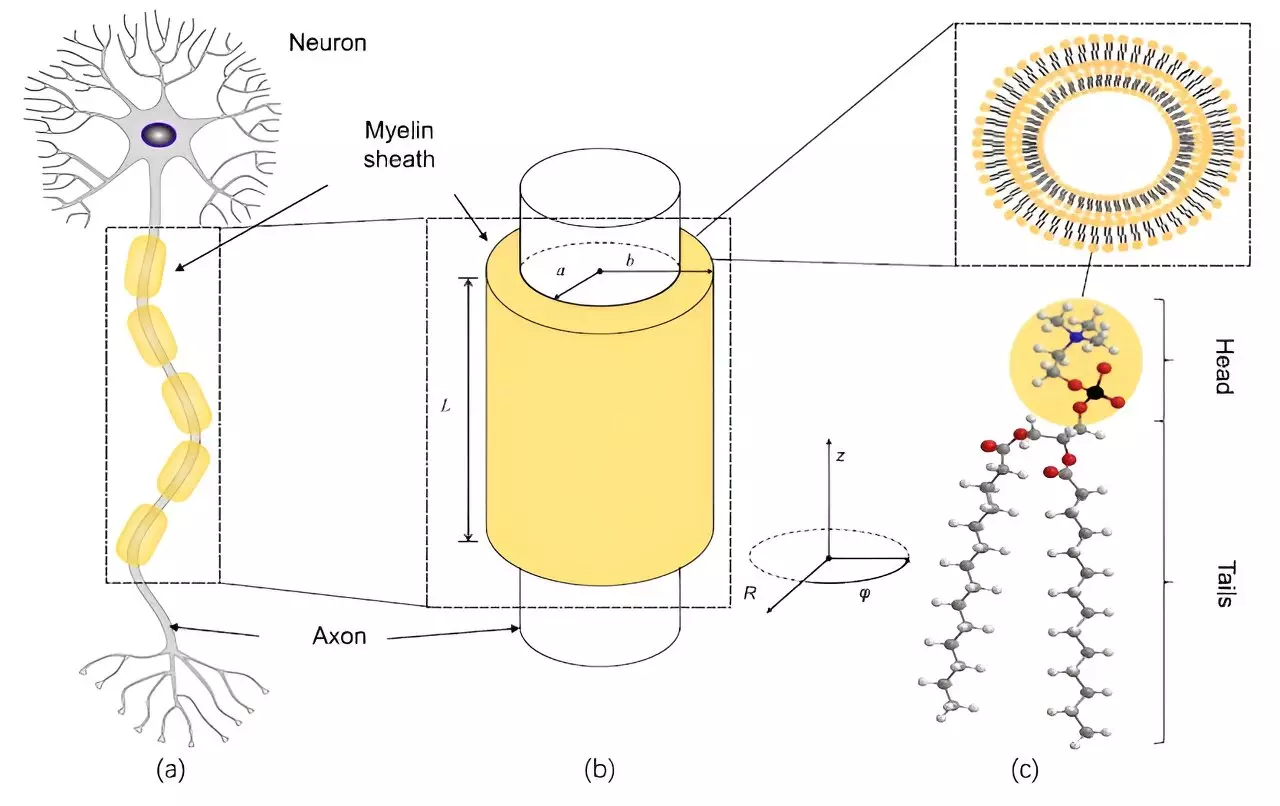Understanding consciousness remains one of the most perplexing challenges facing modern science. This intricate phenomenon has left researchers perplexed about its origins and operational mechanisms, especially when considering the brain’s rapid and synchronized activity. Recent studies have opened the door to new theories, particularly in the context of quantum mechanics and its potential implications for explaining neural synchronization. Researchers in China have provided intriguing insights that could fundamentally shift our understanding of how neurons communicate, suggesting that quantum entanglement might play a critical role in the intricate dance of consciousness.
At a cellular level, neurons communicate through synaptic signals, which travel along filamentous structures called axons, surrounded by myelin sheaths. Traditionally thought to facilitate signal transmission, myelin does more than merely insulate the axons; it actively influences the efficiency and speed of neuronal communication. Comprised of lipid layers, myelin acts like an electrical insulator, enhancing the conduction speed. However, research suggests that the speed at which electric signals propagate along these axons is significantly slower than previously assumed—a realization that has led to questioning whether traditional mechanisms can fully explain the rapid synchronizations witnessed in neural networks.
In a groundbreaking study, Yong-Cong Chen and his colleagues posited that quantum entanglement may provide an exceptional explanation for the speed of neural synchronization. They hypothesize that entangled photons could exist within the myelin sheath, allowing instantaneous signaling across the distances involved in neuronal communication. This concept positions quantum mechanics not merely as an abstract theoretical framework but as potentially vital to understanding the subtleties of consciousness itself. By proposing that photonic entanglement could enable rapid information transfer, they highlight an essential intersection between quantum physics and neurobiology.
The researchers employed advanced quantum modeling to frame their hypothesis, theorizing that a series of entangled photons could emerge from energy transition processes within the myelin. Their approach involved examining how the photons interact with natural vibrations from lipid molecules that comprise the myelin structure. Engaging with principles from cavity quantum electrohydrodynamics, the study illustrated how photons behaved within the insulating myelin sheath and how their interactions fostered entanglement. The outcome indicated that these photons might maintain a level of entanglement capable of facilitating communication at rates exceeding those of ordinary synaptic transmission.
The nature of entangled photons challenges conventional physics concepts by demonstrating interdependence across distances—an instant connection regardless of spatial separation. In this model, if one photon undergoes a change, its entangled partner simultaneously reflects that change. Consequently, the research presents a captivating idea: if these entangled states intersect with neuronal ion channels, the firing patterns and states of these channels might influence each other instantaneously. This could radically alter how we understand synaptic transmission, revealing a daunting layer of complexity within our neural circuitry.
As the study unveils potential mechanisms linking quantum physics to consciousness, it leaves many questions unanswered. What are the tangible implications of this entangled state on overall brain function? While Chen and his team refrain from directly claiming a link between consciousness and quantum entanglement, their findings encourage the scientific community to explore previously neglected avenues of research—primarily, the molecular mechanisms that underlie neuronal synchronization. This research beckons a interdisciplinary dialogue between physicists and neuroscientists, urging both fields to reconsider established paradigms and explore the boundaries of what we understand about the mind.
This research initiates a new chapter in the exploration of consciousness and its neural substrates. With ongoing advancements in both quantum mechanics and neurobiology, interdisciplinary collaboration may unlock fresh insights into how consciousness manifests how quantum phenomena interact with biological processes. The notion that our cognitive abilities may hinge upon quantum entanglement is a bold proposition, yet it is equally tantalizing. As scientists delve deeper into understanding the intersections of quantum physics and the brain, it may stretch the limits of our comprehension and redefine what it means to be conscious.
While the coupling of quantum entanglement and consciousness remains a hypothesis requiring further exploration, the potential ramifications of this research invite a paradigm shift in how we perceive not only consciousness but the entire fabric of life itself.


Leave a Reply